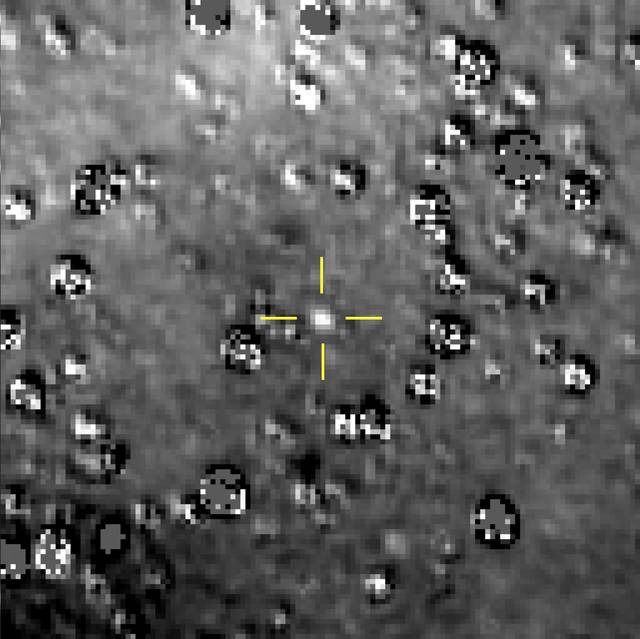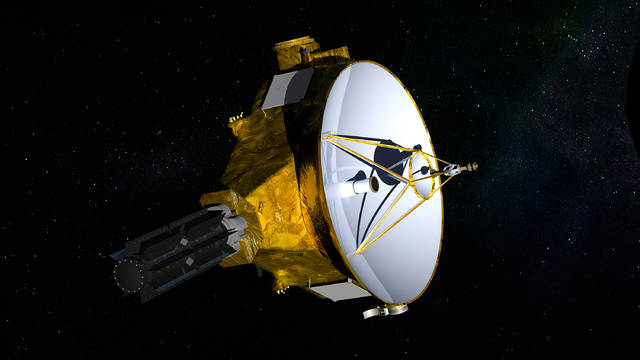LAUREL, Md. — The NASA spacecraft that yielded the first close-up views of Pluto hurtled toward a New Year’s Day rendezvous with a tiny, icy world a billion miles farther out, in what would make it the most distant cosmic body ever explored by humankind.
New Horizons was on course to fly past the mysterious, primitive object nicknamed Ultima Thule at 12:33 a.m. Tuesday. The close encounter comes 3½ years after the probe’s swing past Pluto, which until now was the farthest object visited by a spacecraft from Earth.
This time, the drama was set to unfold more than 4 billion miles (6.5 billion kilometers) from Earth, so far away that it will be 10 hours before flight controllers find out whether the spacecraft survived the flyby.
A few black-and-white pictures might be available within an hour or two of that official confirmation, but the highly anticipated close-up shots won’t be ready until later Tuesday or Wednesday, in color, it is hoped.
“Today is the day we explore worlds farther than ever in history!! EVER,” tweeted lead scientist Alan Stern.
Stern said Monday from Mission Control at Johns Hopkins University’s Applied Physics Laboratory in Laurel that the team has worked years for this moment and now, “It’s happening!!”
He called it an auspicious beginning to 2019, which will celebrate the 50th anniversary of Neil Armstrong and Buzz Aldrin’s footsteps on the moon in July 1969. Just a week ago, NASA marked the golden anniversary of Apollo 8, astronauts’ first flight to the moon.
“Ultima Thule is 17,000 times as far away as the ‘giant leap’ of Apollo’s lunar missions. The exploration at Ultima Thule is a fitting way to honor the brash exploration and boldness that was Apollo,” Stern wrote in an opinion piece in The New York Times.
New Horizons — the size of a baby grand piano — was expected to hurtle to within 2,200 miles (3,500 kilometers) of Ultima Thule, considerably closer than the Pluto encounter of 2015.
Its seven science instruments were to continue collecting data for four hours after the flyby. Then the spacecraft was to turn briefly toward Earth to transmit word of success. Radio signals take over six hours to cover the distance to Earth.
Scientists believe there should be no rings or moons around Ultima Thule that might endanger New Horizons. At a speed of 31,500 mph (50,700 kph), New Horizons could easily be knocked out by a rice-sized particle.
The risk added to the excitement.
Queen guitarist Brian May, who also happens to be an astrophysicist, joined the team at Johns Hopkins with plans to present around midnight the cosmic premiere of a music composition he wrote in honor of the big event.
With New Horizons out of contact with Earth from late Monday afternoon until Tuesday morning, Mission Control was pretty much empty, with all the festivities centered at a nearby campus building.
A large, gold-colored “2019” hung in the main reception area, which was decorated with gold balloons in the shapes of crescent moons and stars, and sparkling, illuminated streamers. By early afternoon, hundreds of team members, relatives, guests and reporters were already on hand.
Ultima Thule was unknown until 2014, eight years after New Horizons departed Earth. It was discovered by the Hubble Space Telescope and added to New Horizons’ itinerary.
Deep inside the so-called Kuiper Belt, a frigid expanse beyond Neptune that is also known as the Twilight Zone, Ultima Thule is believed to be a preserved relic dating back 4.5 billion years to the formation of our solar system. As such, it is the most primitive body ever visited by a spacecraft.
Scientists suspect Ultima Thule is a single object no more than 20 miles (32 kilometers) long, though there’s a chance it could prove to be two smaller bodies orbiting one another or connected by a slender neck. It is thought to be the shape of a potato and dark in color with a touch of red, the result of being zapped by cosmic rays for eons.
The exact shape and composition won’t be known until Ultima Thule starts sending back its treasure trove of data, a process expected to last almost two years.
In classic and medieval literature, Thule was the most distant, northernmost place beyond the known world.
———
The Associated Press Health & Science Department receives support from the Howard Hughes Medical Institute’s Department of Science Education. The AP is solely responsible for all content.



